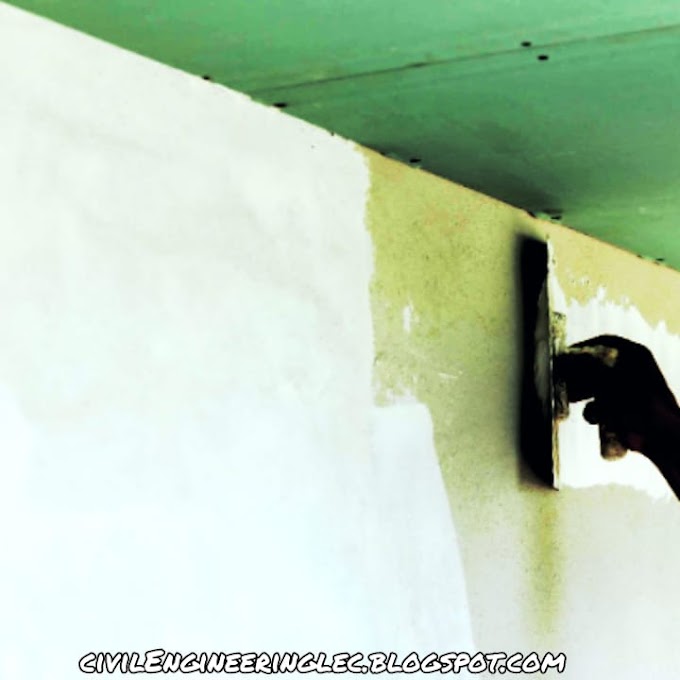Brick Masonry
Different materials and different methods are used
to construct the building. If the bricks, stones or concrete blocks are built
with a mortar, it is called masonry. If
the construction is done with bricks then it is called brick masonry.
Brick masonry is common in the plains. Brick masonry
is made in clay mortar, lime mortar, or cement mortar. In terms of types, its masonry is divided
into the following four groups.
·
First Class Brick Masonry
·
Second Class Brick Masonry
·
Third Class Brick Masonry
·
Katcha Brick Masonry
Principles of Brick Masonry
The following are the
principles of brick masonry
·
Brick masonry should use the best type
of bricks that are clean and solid. These aunts should not absorb more than one
sixth of their weight after being in water for 24 hours.
·
The bricks are soaked in water before
use so that the dust on the surface of the bricks does not absorb water from
the mortar and the bricks can be easily applied.
·
The frog is placed on top of the bricks
so that the mortar is well filled and the joints are strengthened.
·
Unnecessary bricks should not be used.
·
The horizontal pair must be truly
vertical and the vertical pair must be truly vertical.
·
The amount of mortar should not be less
or more than required but should be used only in such a way as to cover the
bottom and adjacent sides of the brick.
·
When masonry, make sure that no part of
the wall is made one meter higher than the other, and that each layer of bricks
be joined together with appropriate joints.
·
Masonry should not be more than 1.5
meter high in a day.
·
If plastering or pointing is to be done
on the surface, the joints of the outer surface of the wall should be raking to
a depth of 15 to 20 mm.
·
Doors and windows should be well filled
with mortar or concrete around the hold fasts attached to the wall.
·
The masonry surface should be curing for
at least ten days.
·
If the wall is to be lengthened or
joined in the future, toothing should be left out during construction.
·
Double scaffolding up to lower wall
height and single scaffolding at higher height should be used when applying
scaffolding, the header brick end should be removed and the brick should be
re-installed when the work is completed.
·
When doing wall masonry, masonry days
are started from the edges and then masonry is done on the inside.
 |
| Principles of Brick Masonry |
Method of Bricks Masonry
Brick masonry is done
very skillfully. In masonry, the arrangement of joints and other masonry
principles are taken into consideration. Otherwise, the masonry is weakened and
will not be able to bear the required weight.
Selection of Bricks
Bricks are chosen
according to the quality of construction. The bricks used on the front side of
the walls should be solid. They should be beautiful in color and shape. The
bricks used between the walls and at the back should also be standard but
should be used even if they are damaged to a permissible extent.
Stacking of Bricks
Bricks that are close
to the place of use are used in a sequence. In this sequence, thousands of
bricks are piled separately so that during use it will be known how many bricks
have been used and how many are left. Care should be taken not to damage the
corners and edges of the bricks when stacking and re-lifting the bricks.
Soaking of Bricks
Bricks are soaked in
water for eight hours before being used for masonry of bricks in lime or cement
mortar. A small pond is made for them. The soaked bricks should be removed half
an hour before use so that their surface can dry. The bricks have the following
purposes for soaking.
·
The brick could not absorb the water
contained in the mortar.
·
The mortar can be easily saved.
·
The mortar adheres well with brick.
·
Dust from the brick surface
Preparation of Mortar
When masonry work, the mortar
is prepared on the spot as well. Cement mortar is prepared only so that it can
be used within half an hour. The lime mortar is prepared for use in two hours. While
the fat lime mortar is prepared for one day and kept in the oven. If the cement
paste cannot be used in half an hour and the set starts, then it should not be
reused by adding shaken water. Rather it should be discarded. The mortar is
mixed by hand for small tasks. Small construction works refer to such works
here only one or two masons are working. While large works refer to a work on
which two or more mechanics are working, for large works the mortar is prepared
from machinery.
Laying of Bricks
Brick masonry is done
in a special order. This arrangement is called bond. Different types of bonds
are used in different places, but in the United States most English bonds are
used. The masonry should always conform to the specified principles. While masonry,
special attention should be paid to the outer edges of the walls, pillars, etc.
The horizontal joints between the different layers of bricks must be truly
horizontal. Vertical joints should not be continuous. Masonry should always
start from the edges. The part between the walls or pillars should be completed
later. Masonry should not exceed 1.5 meter in a day. In 100cft 1350 bricks are
required for masonry. While 500 bricks are required for masonry in one cubic
meter.
Tools Used In Bricks Masonry
1.
Trowel
2.
Brick Hammer
3.
Spirit Level
4.
Line and Pins
5.
Straight Edge
6.
Mason’s Square
7.
Plumb Bob
8.
Steel Tap
9.
Hammer
10. Chisel



0 Comments